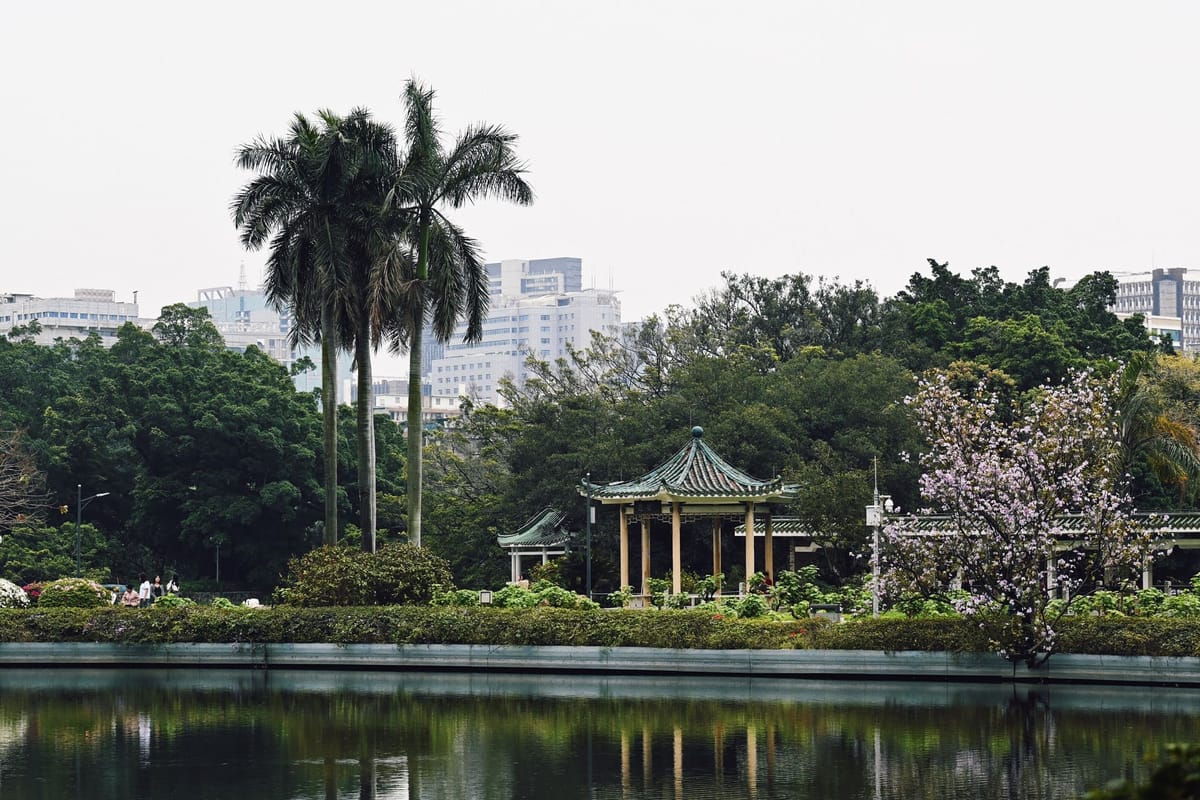When I was a kid, I visited China once. My memory is fuzzy. I remember old streets and buildings beneath hazy skies. I also recall cheap meals. These are the typical images people might have. Yet my view towards China changed after a 3-day trip to Guangzhou last March. This relaxed Southeast Chinese city represents a mix of old traditions and modern growth. It features restored buildings, a stunning skyline, and a vibrant food scene, all linked by an easy-to-use metro system. Read on for your inspiration on where to go and what to do in Guangzhou.
Visit the sights of revitalization and progress
Shamian Island
We began our trips after a scrumptious dim sum lunch close to the hotel. During the trip, we used the metro, which made it easy to reach all the places we visited. The first stop is Shamian Island. Located near Pearl River and known for quaint European architecture and tranquil ambience, it has been a crucial port for foreign trade since Song Dynasty. The Island was once under French and English control from 1859 to 1943. You can still see groups of colonial buildings there. From consulates to banks, this place is important in the history of the region. Today, it is a government-protected tourist attraction due to its cultural importance.
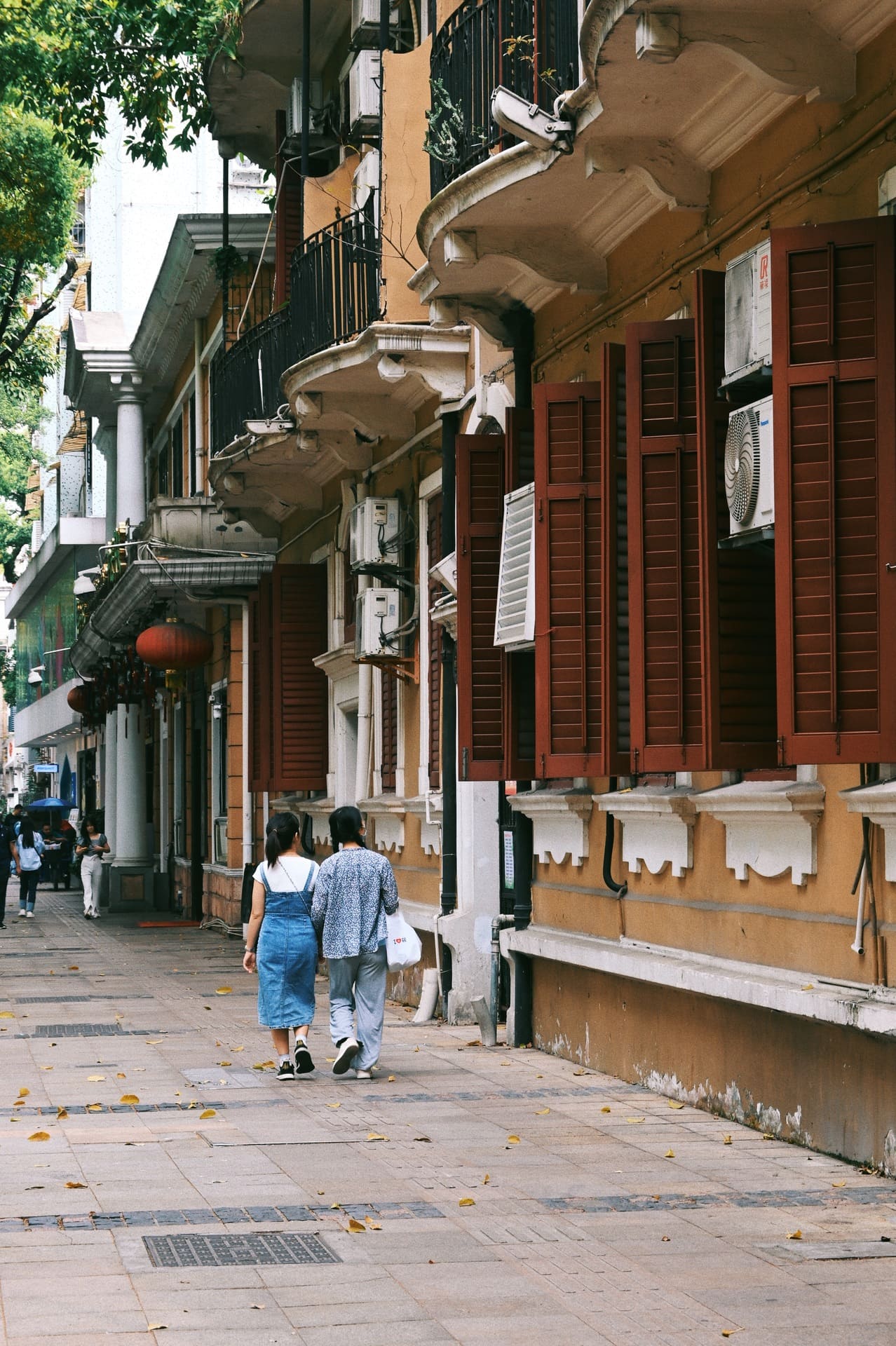



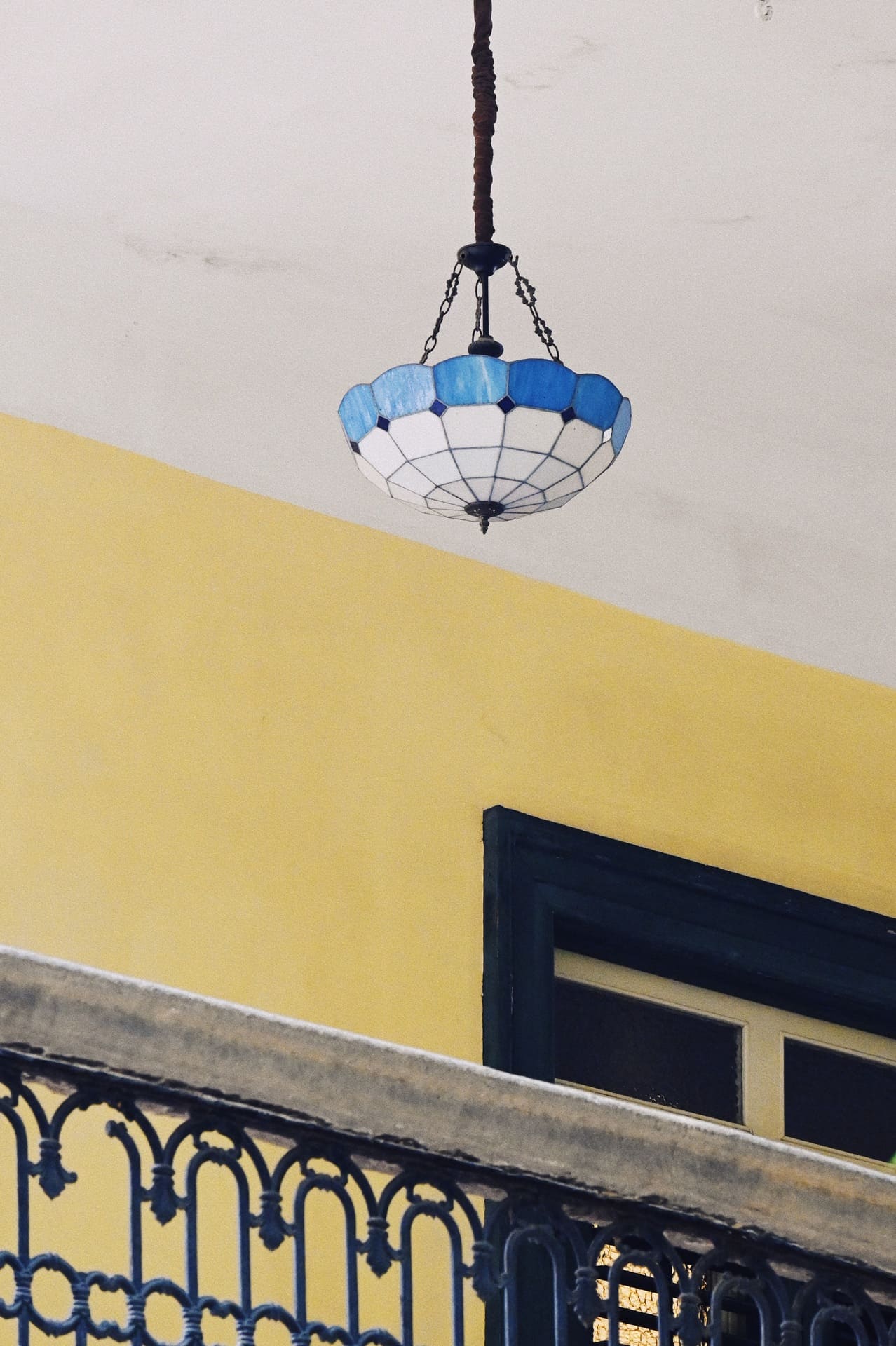
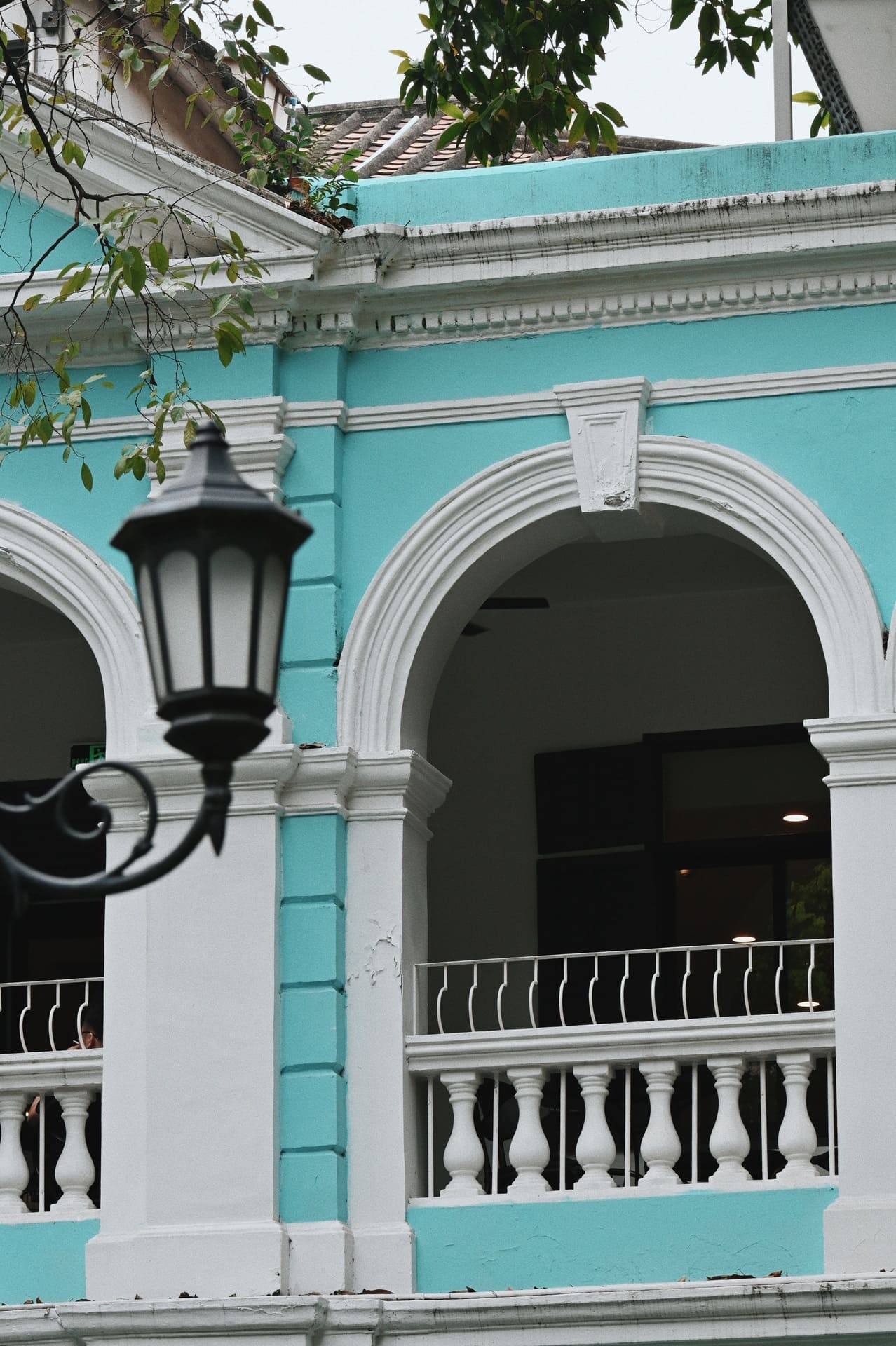

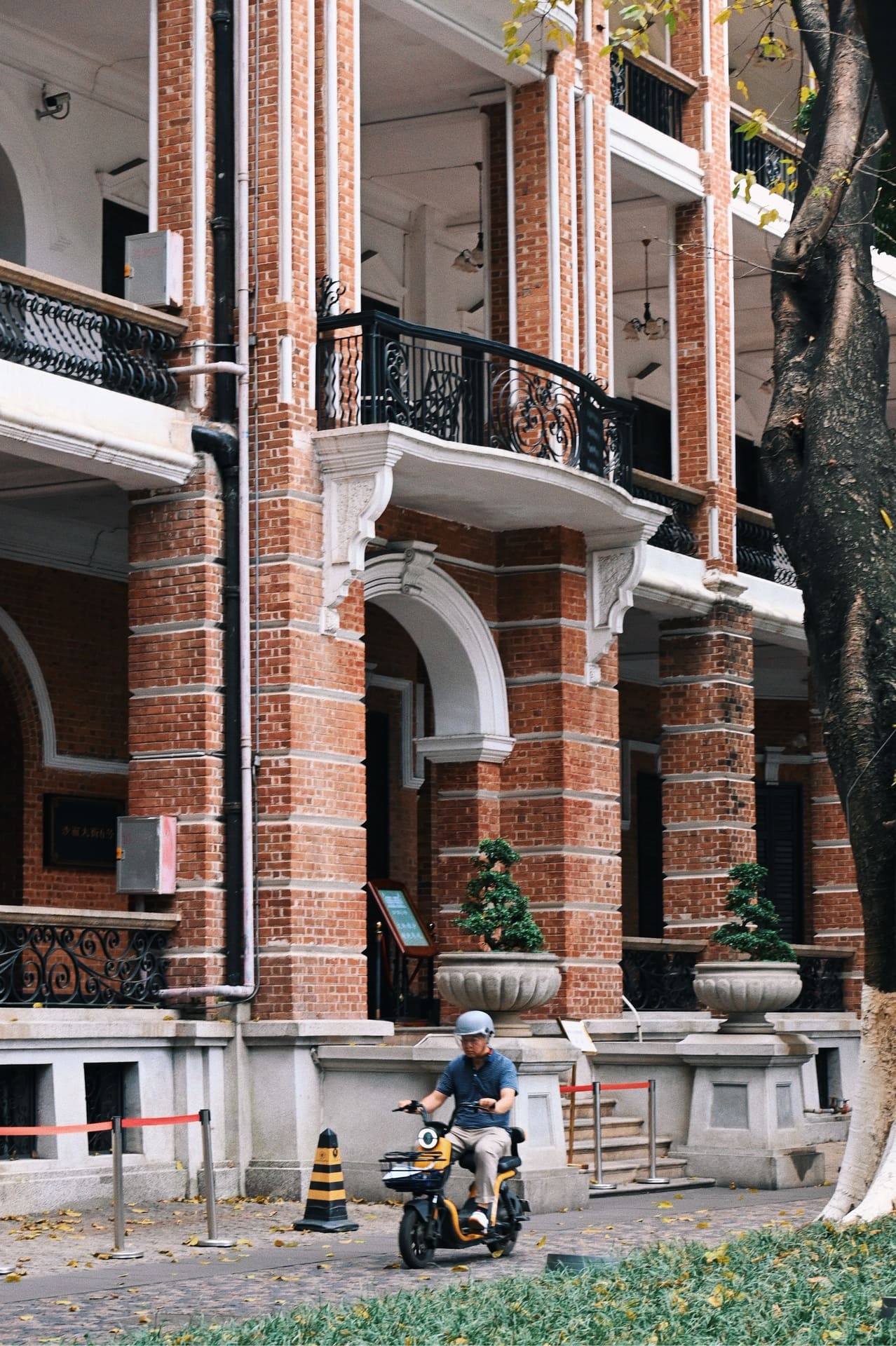
It was a weekday afternoon, so there weren’t many people. We walked down a quiet street lined with trees. We noticed the details of the historic site. There was a beige church with bright stained glass windows and brick buildings with arches. Some buildings had pastel-colored balconies and Tiffany lamps. Spring awaken the blossoms in the shrubs, adding bright hues along the paths. Bronze sculptures of children dressed in traditional Chinese and European clothing were placed around the area. They show the cultural exchange and blending of the two cultures. While the architecture reflects the past in the truest form, small businesses like chic cafes and shops pop up, transforming the place into a hub for young locals. I wish it wasn’t overcast that day, so there would be beams of sunlight casting on the place.
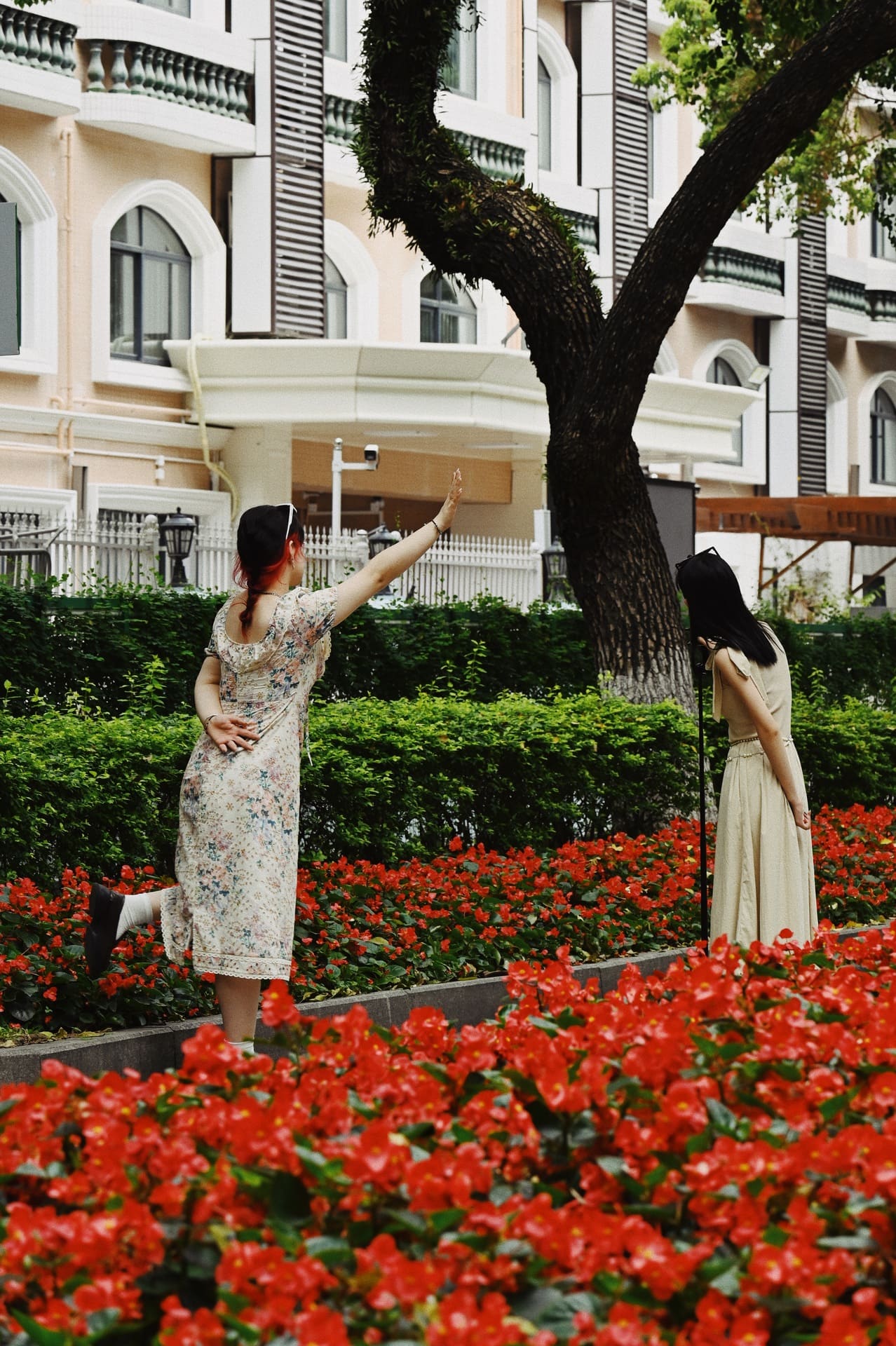

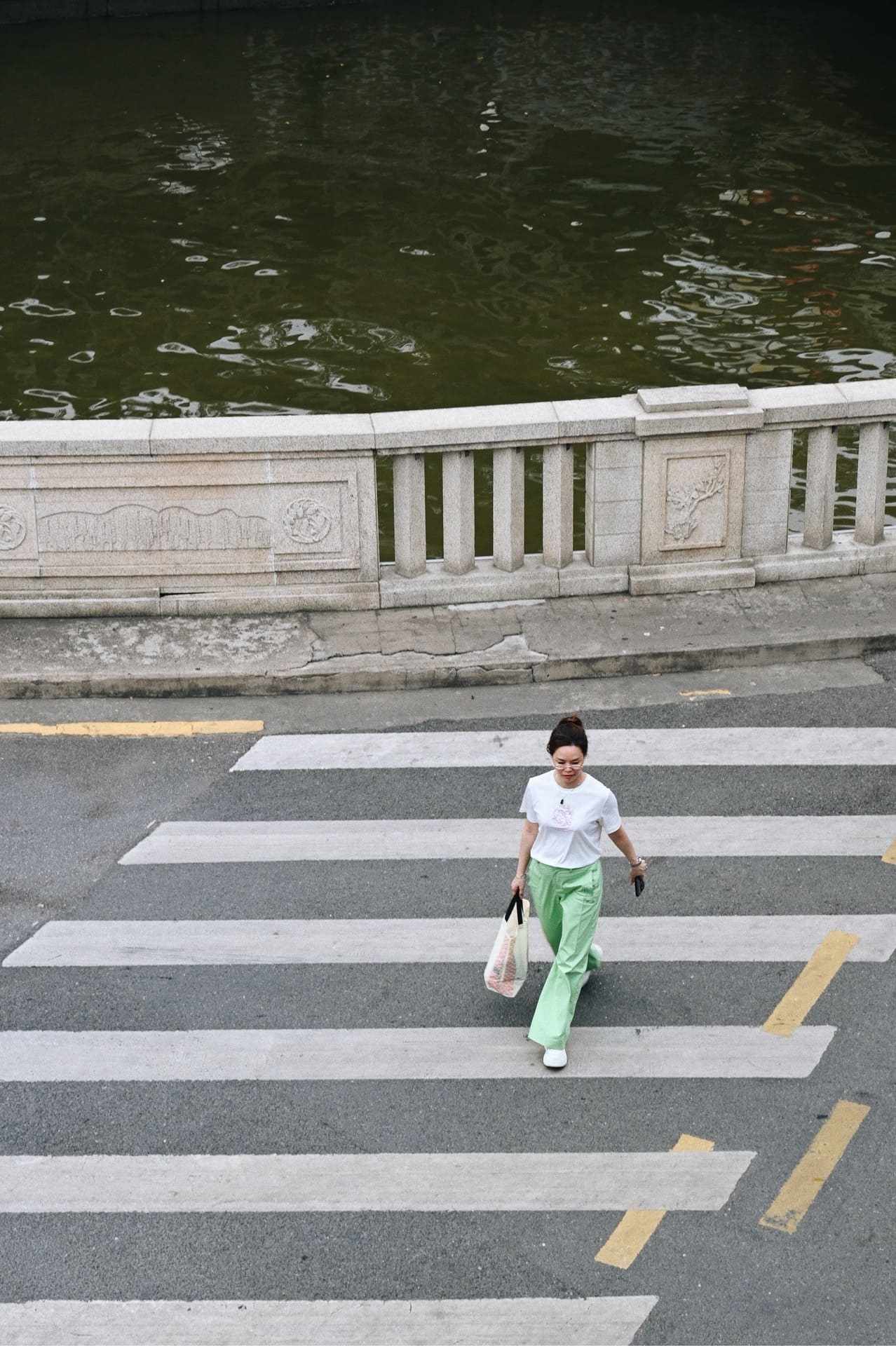
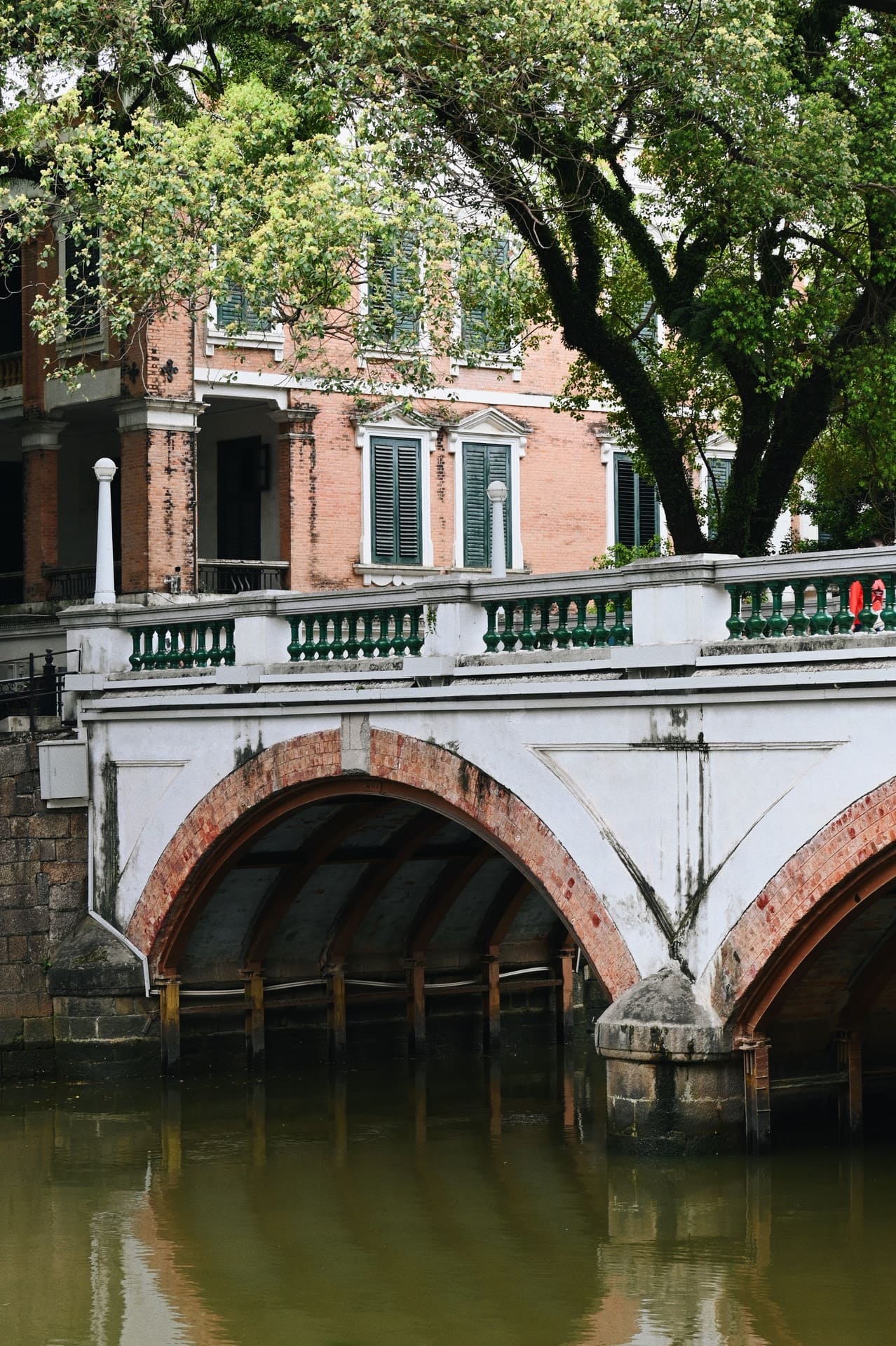

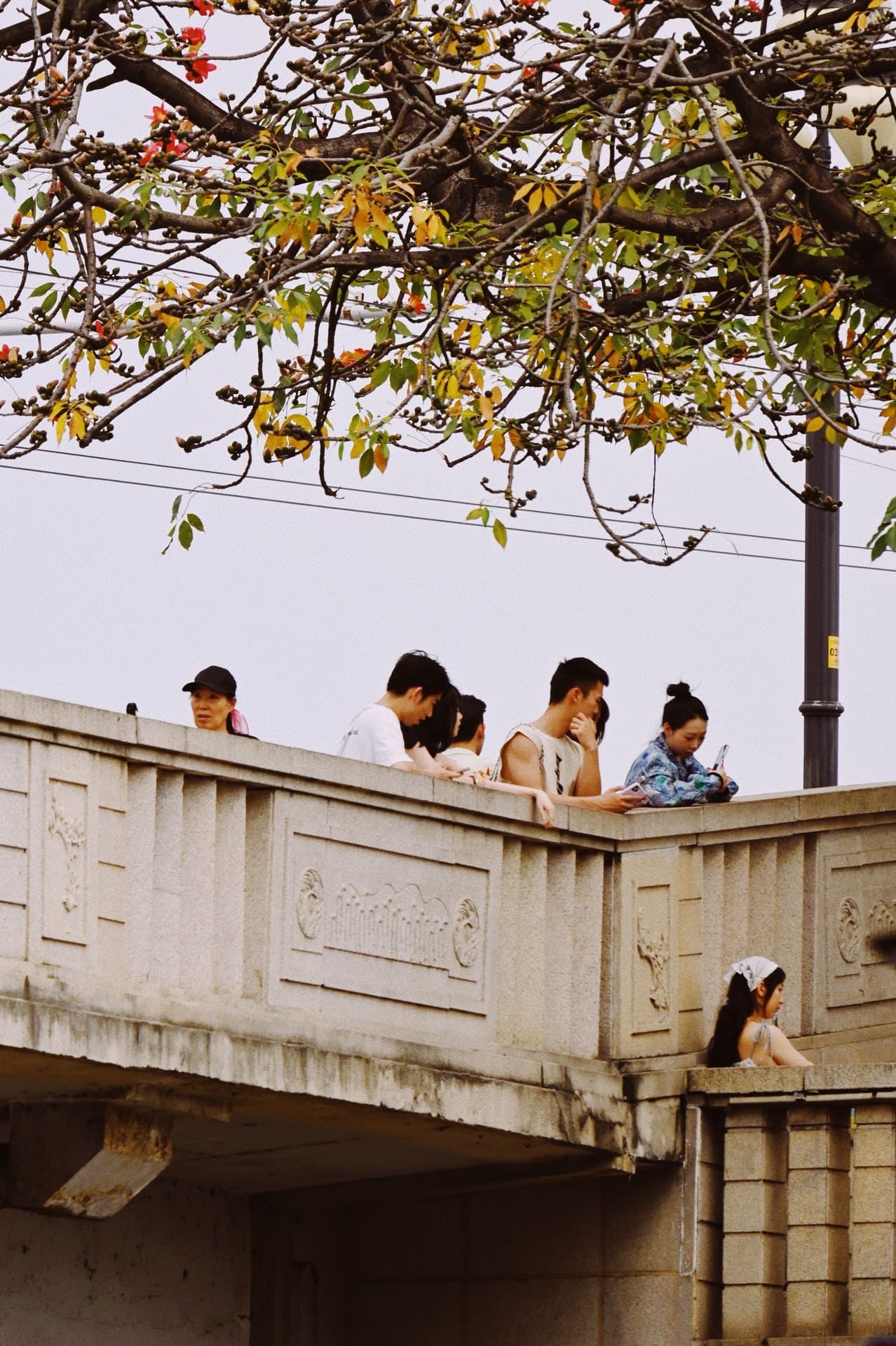
Yong Qing Fang
Yong Qing Fang is another place that shows the harmonious blend of urban development and old historical architecture. This area has unique Cantonese-style buildings. The ground level features shops and corridors, while the upper floors are used for homes. It has been updated and is now a popular place for trendy cafes, restaurants, and shops selling design and cultural items. It is also a great spot for photos. Young people dressed in stylish clothing or sometimes hanfu (Chinese traditional clothing) come here to take a snapshot or two, and hang out in cafes. A Cantonese opera museum is also located in the hub.
We visited there two times. While at daytime you immerse yourself in the historic allure of local architecture, the finesse of quiet Lingnan gardens, and get to known the culture of Cantonese opera, visiting Yong Qing Fang after dark is the electrifying experience you can’t miss – ambient light installation and string lights on parasols of outdoor dining areas brighten up and tinge the space and neutral-colored buildings in the most possible vibrant way. The main feature is the traditional Chinese bridge by the water. Its base is lit up, creating a crescent shape in the reflection. It looks like a gilded moon has come down and is resting in the water, allowing people to see its light up close. It’s the poetic imagination towards the celestial object realized in a simple yet effective way.
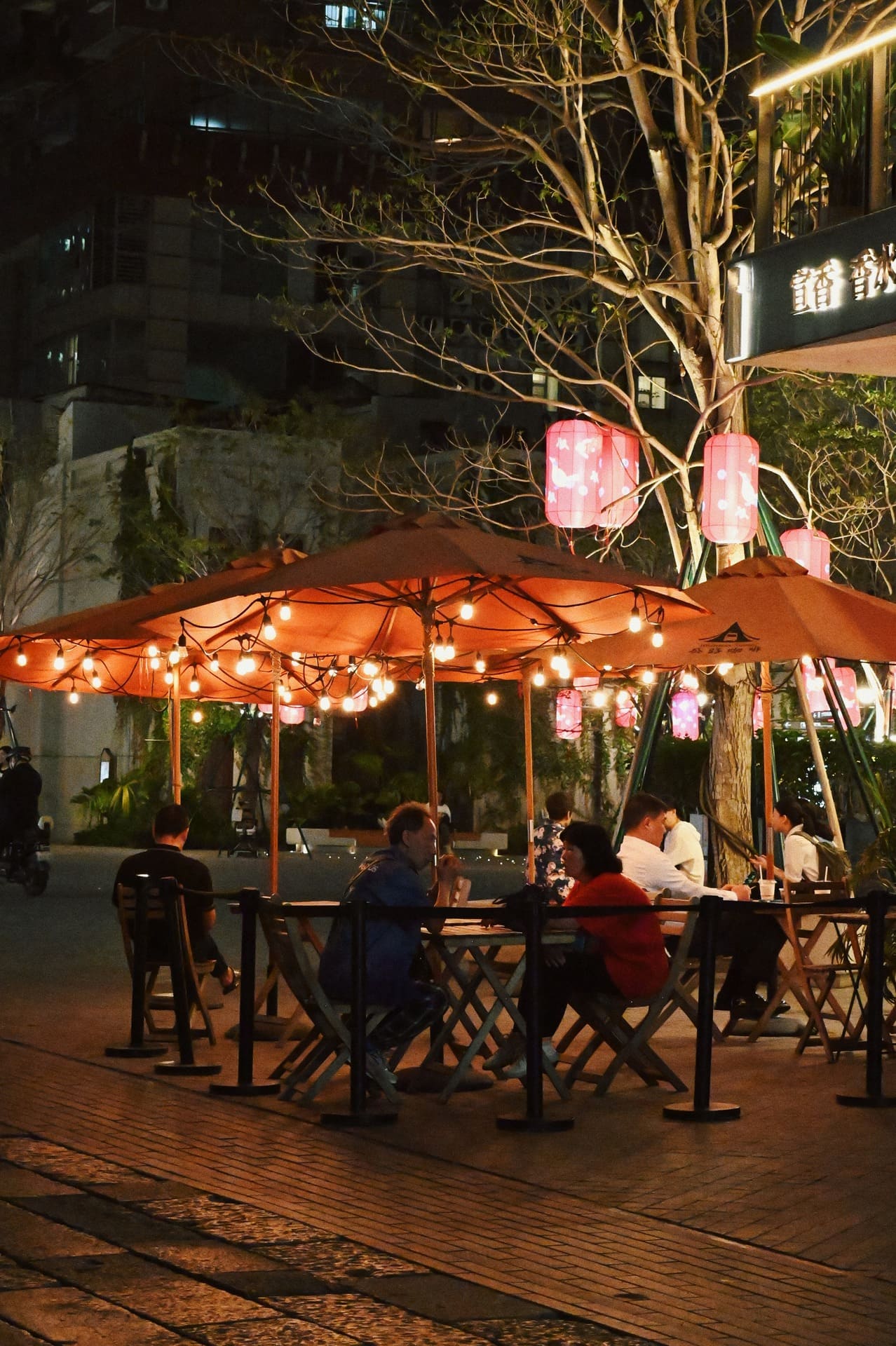

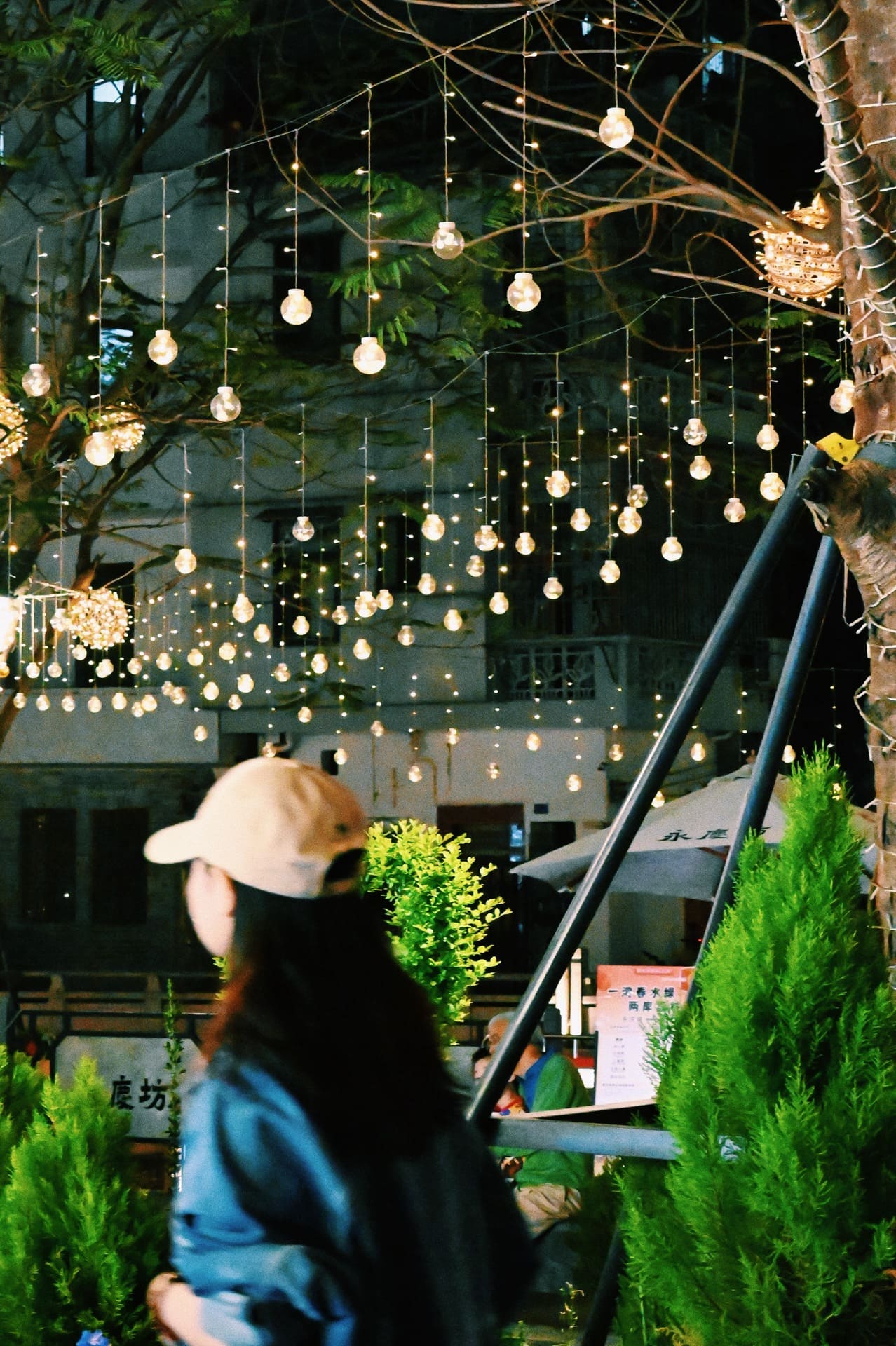
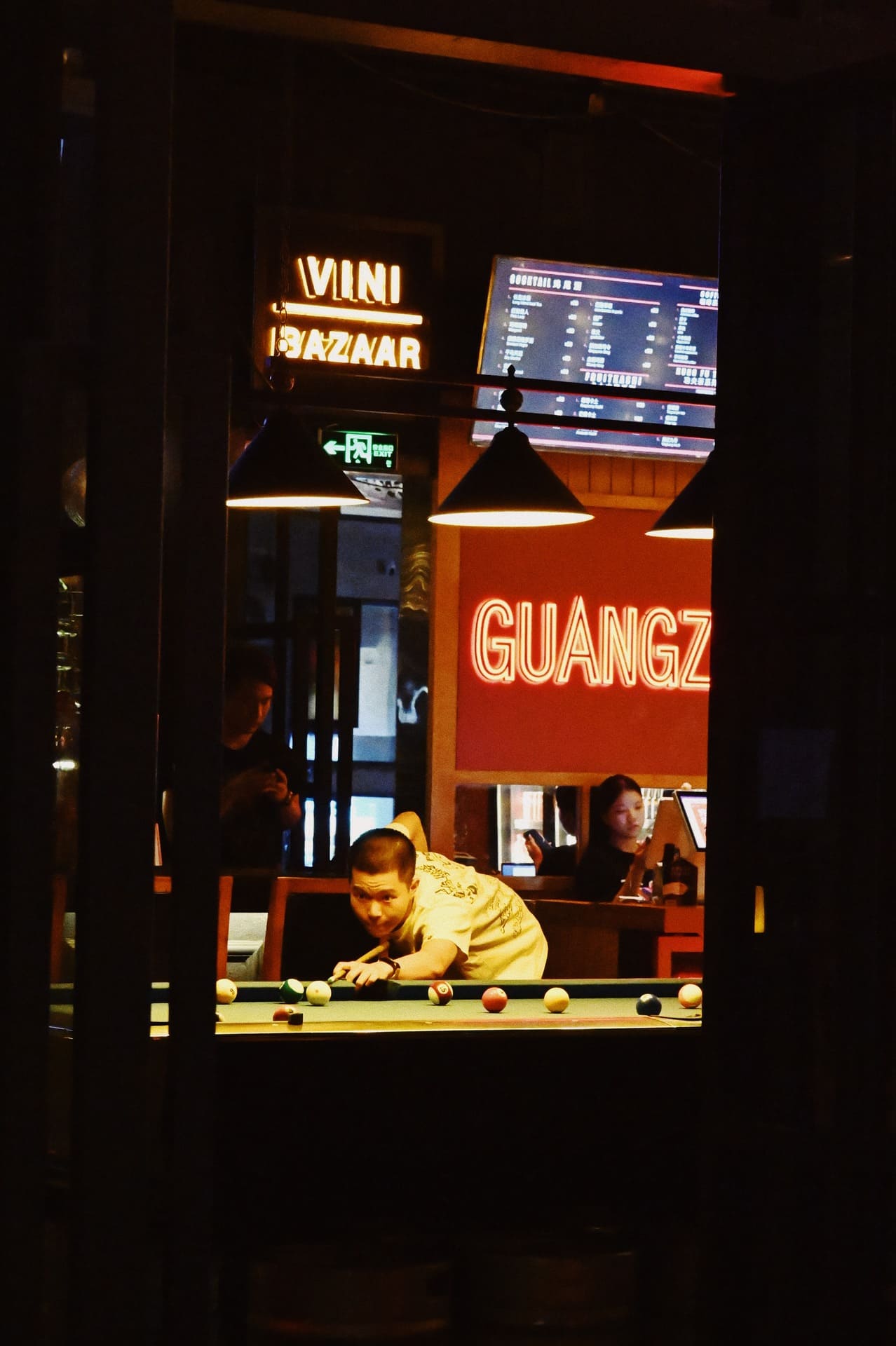
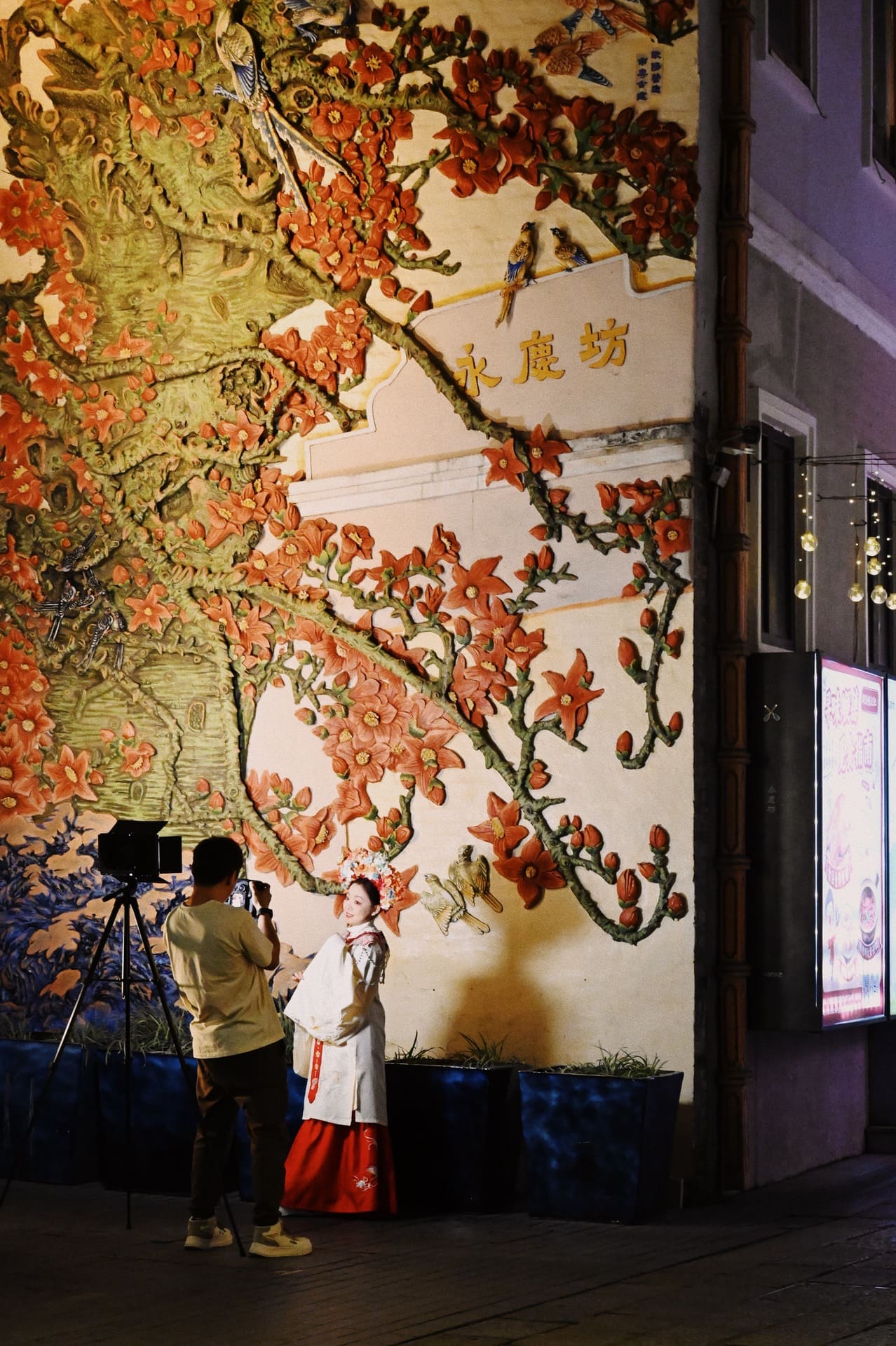
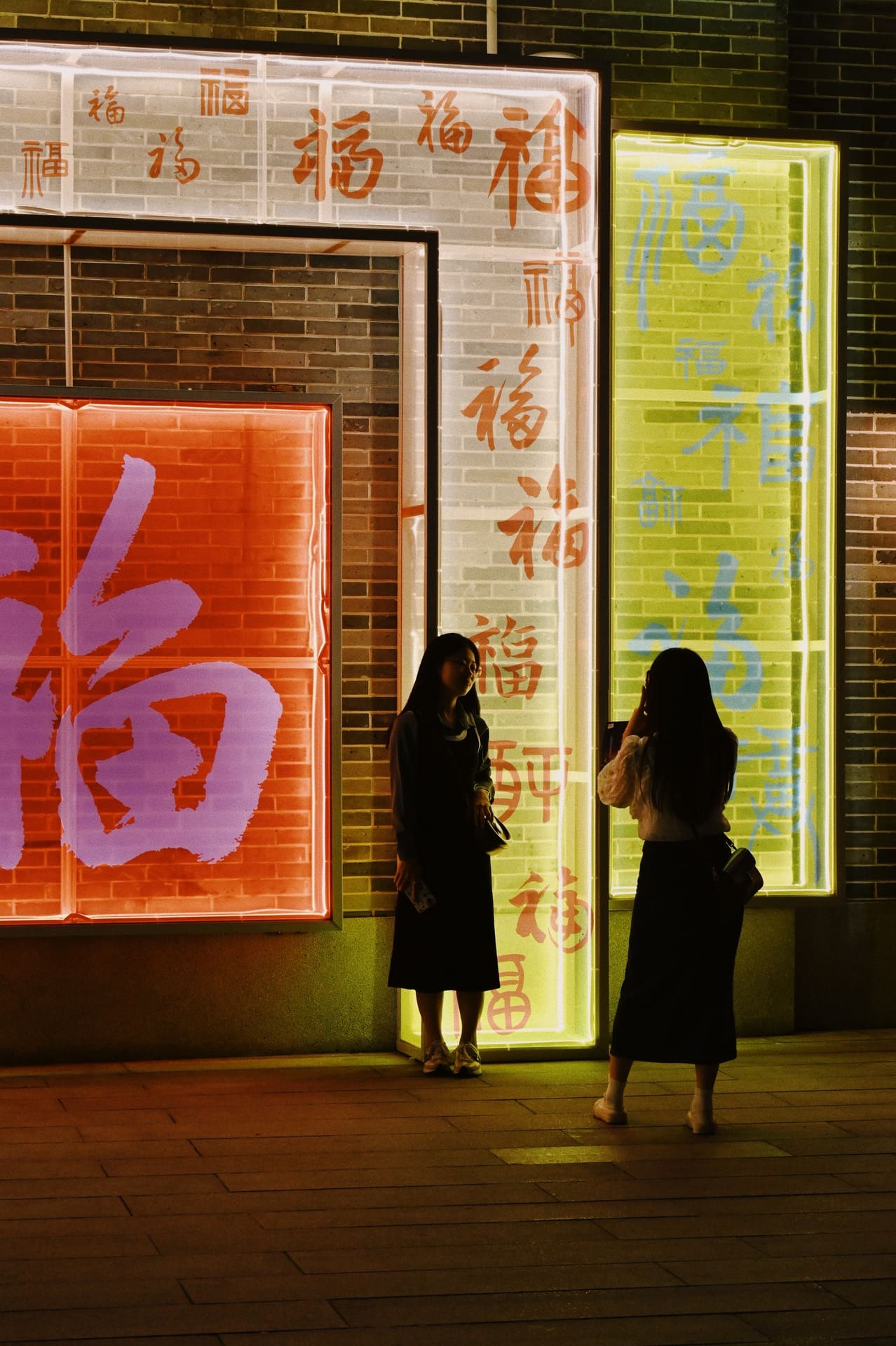

Liuhuahu Park
Speaking of being poetic, Lingnan gardens are a must if you visit Guangzhou, e.g. the renowned Baomo Yuan and Yu Yin Garden. These gardens include traditional Chinese features that fit the local subtropical climate. They also sometimes have European elements, such as stained glass. We didn't go to the places mentioned earlier because we had limited time. However, I still wanted to see a similar spot, so we visited Liuhuahu Park for a quick stop. It’s a sizeable park with some older corners and facilities, but it is well maintained and clean. People were doing workouts, taking photos of nature and the park, and taking a stroll on another leisurely morning.
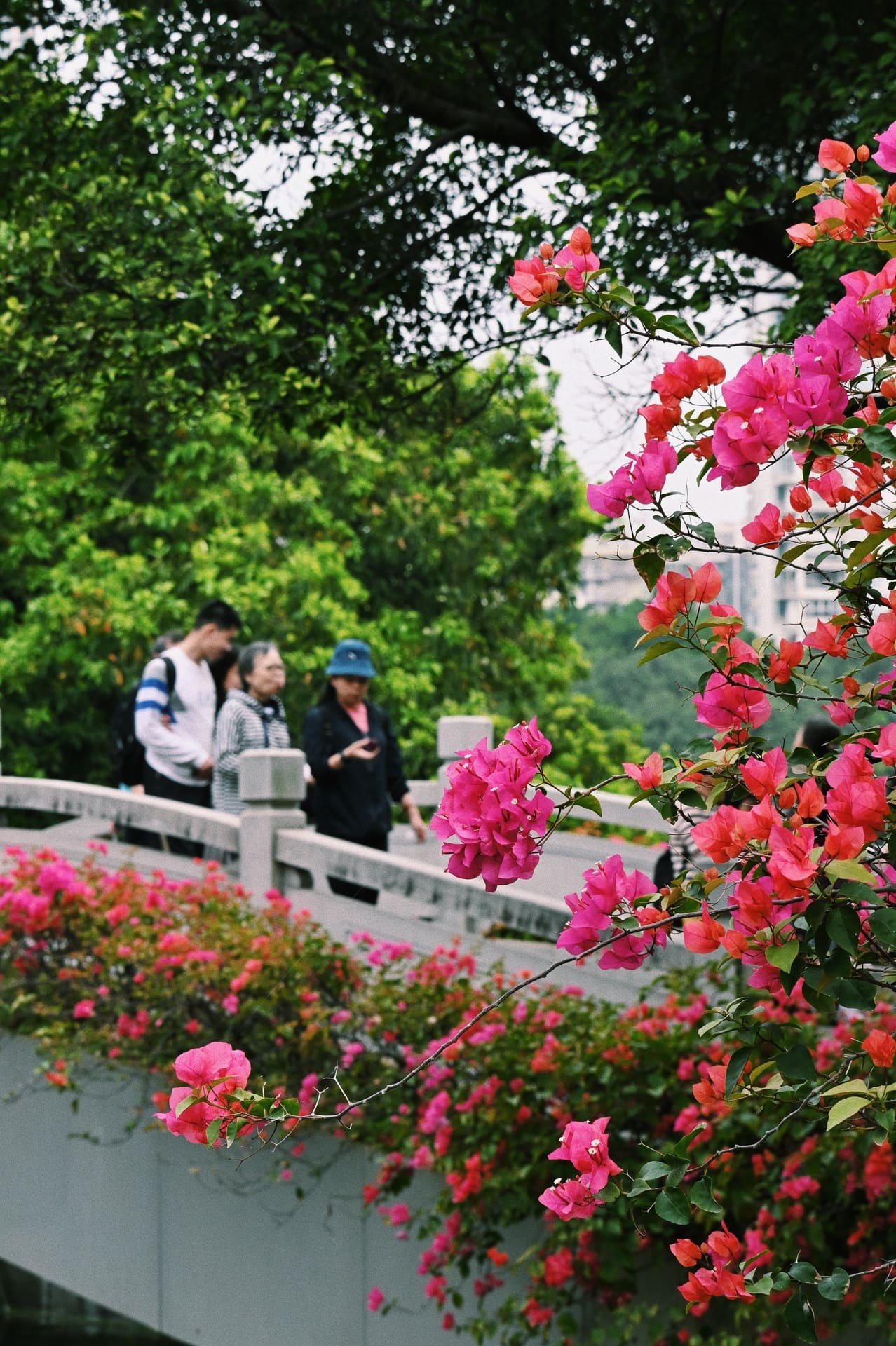

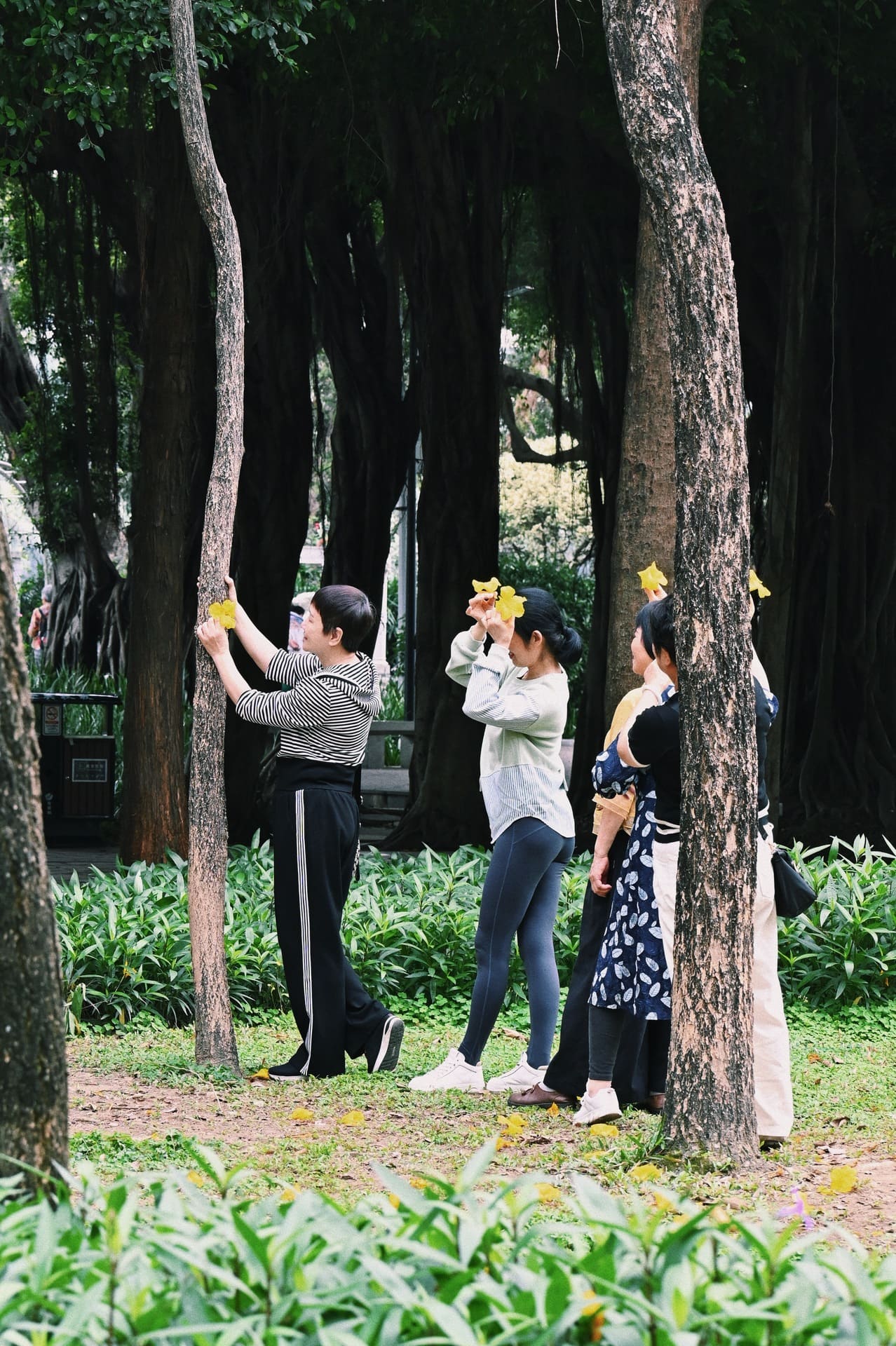
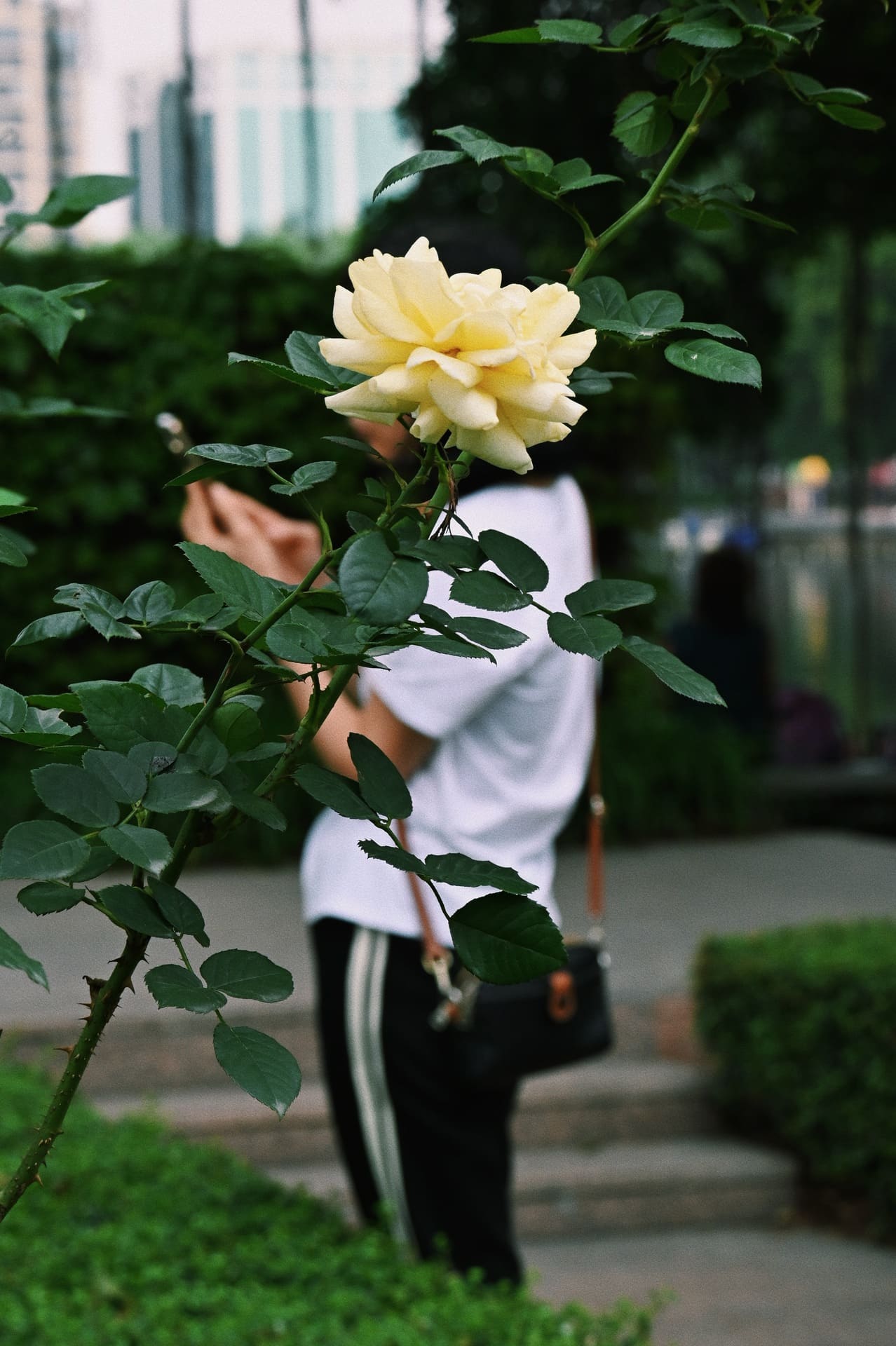
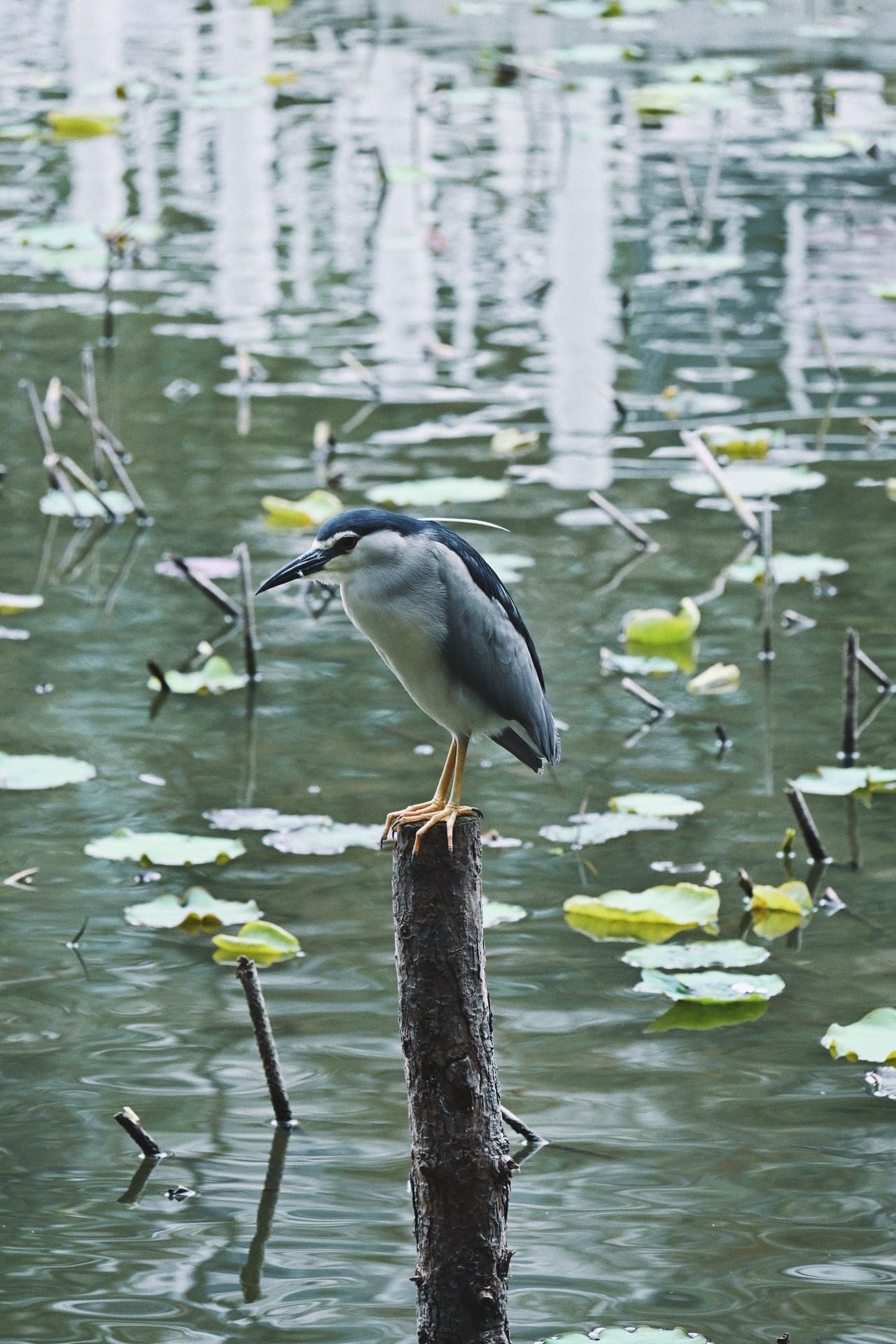
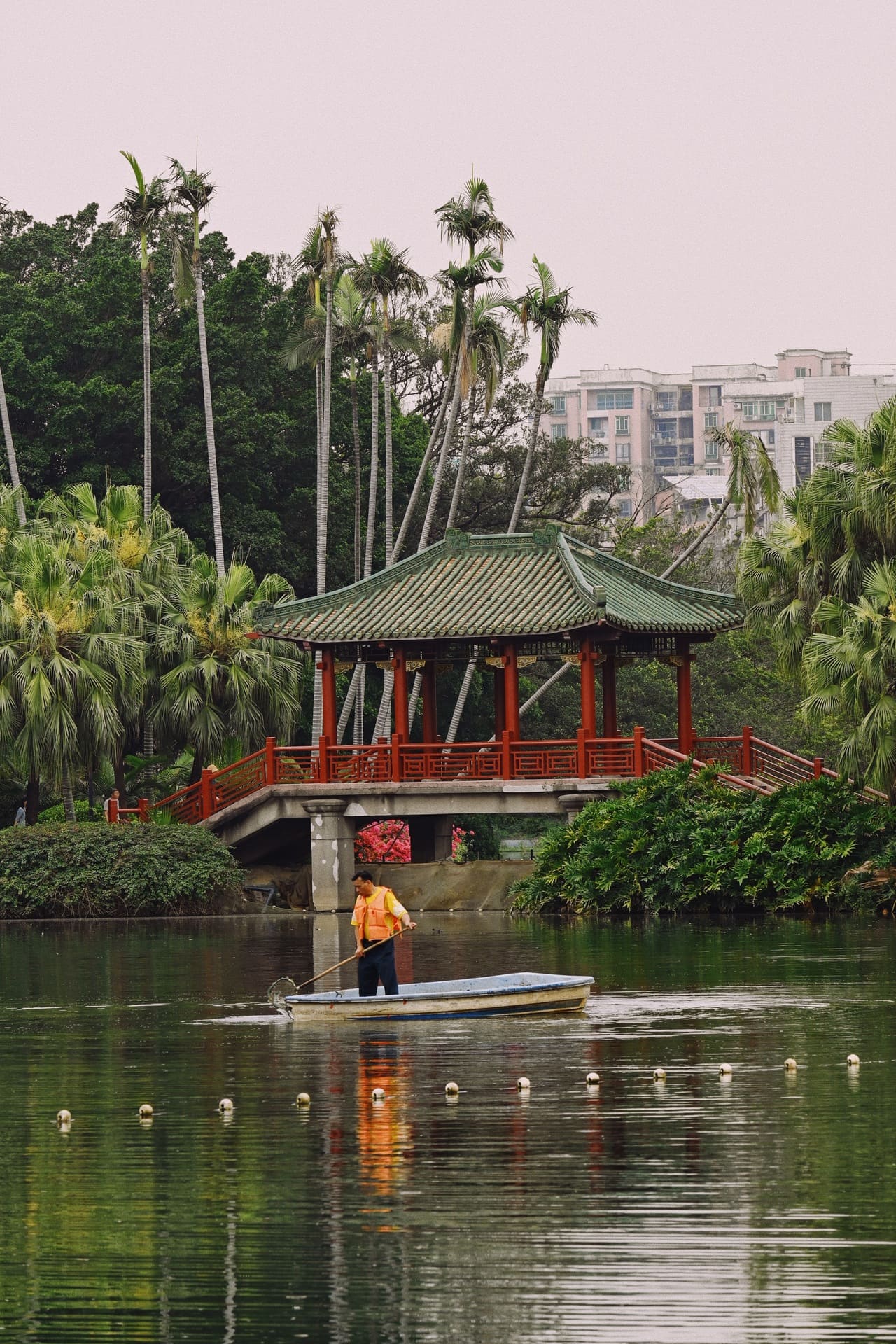
The park is designed with a range of style, from traditional Chinese to European, which reflects in both the architecture and the plants. You can see roses and palm trees together in one garden. There's a classic white building in European style reflecting in the lake. The Lingnan gardens have charming corridors, white walls with green terracotta siding, and nice potted plants. I may not be an expert in Chinese gardens and architecture, but I appreciate the calm they offer. I enjoy seeing how people take care of the plants with love and creativity.

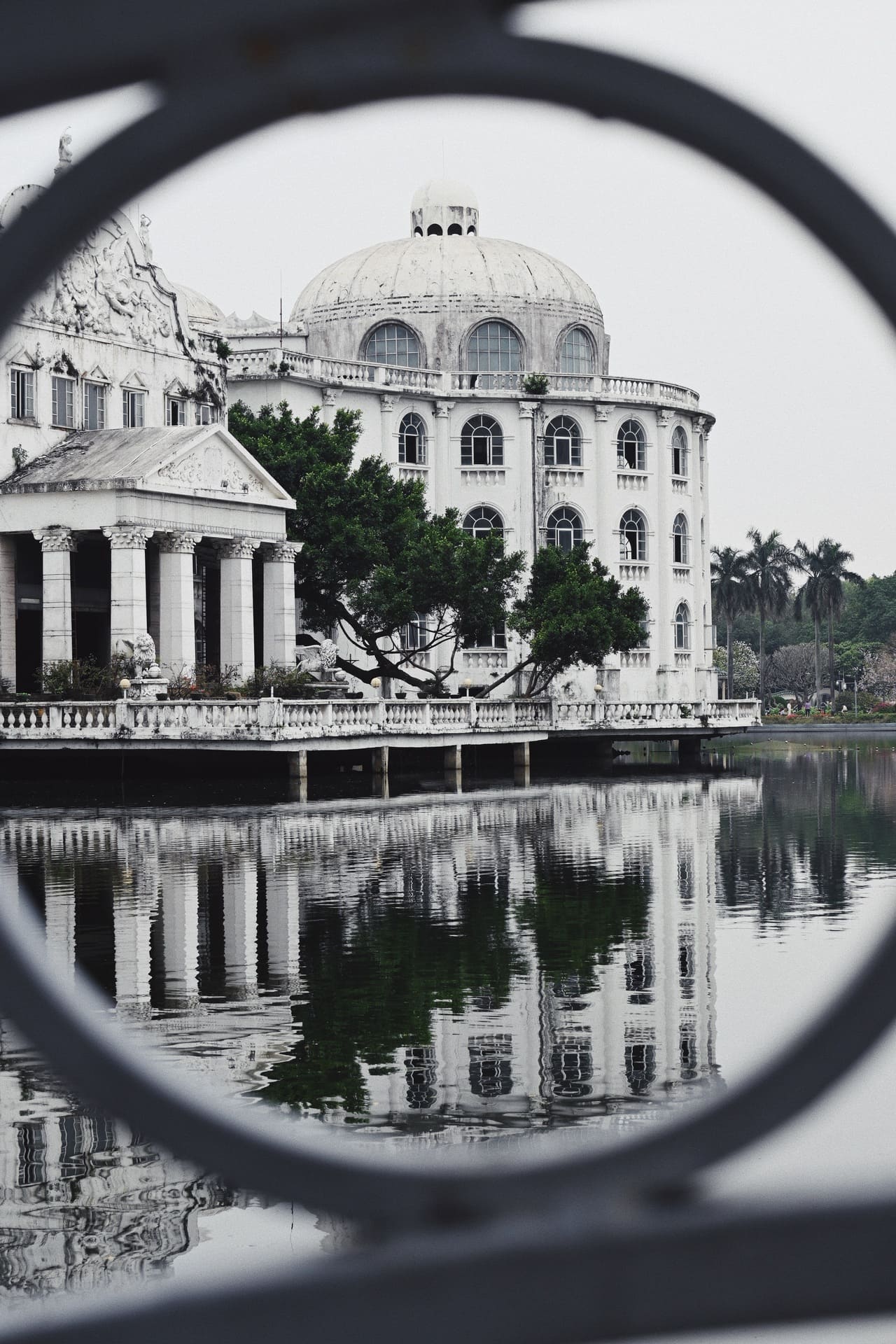
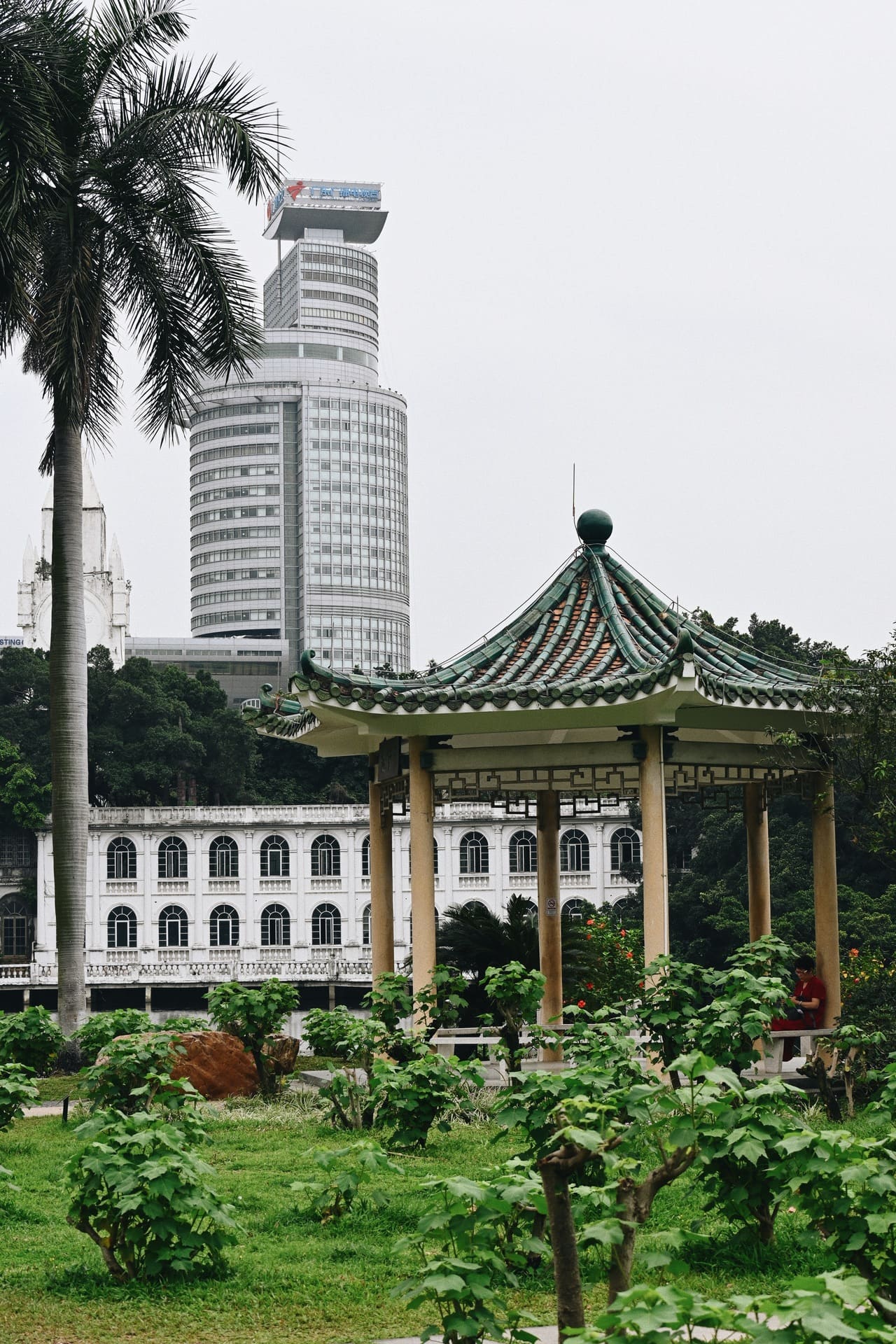
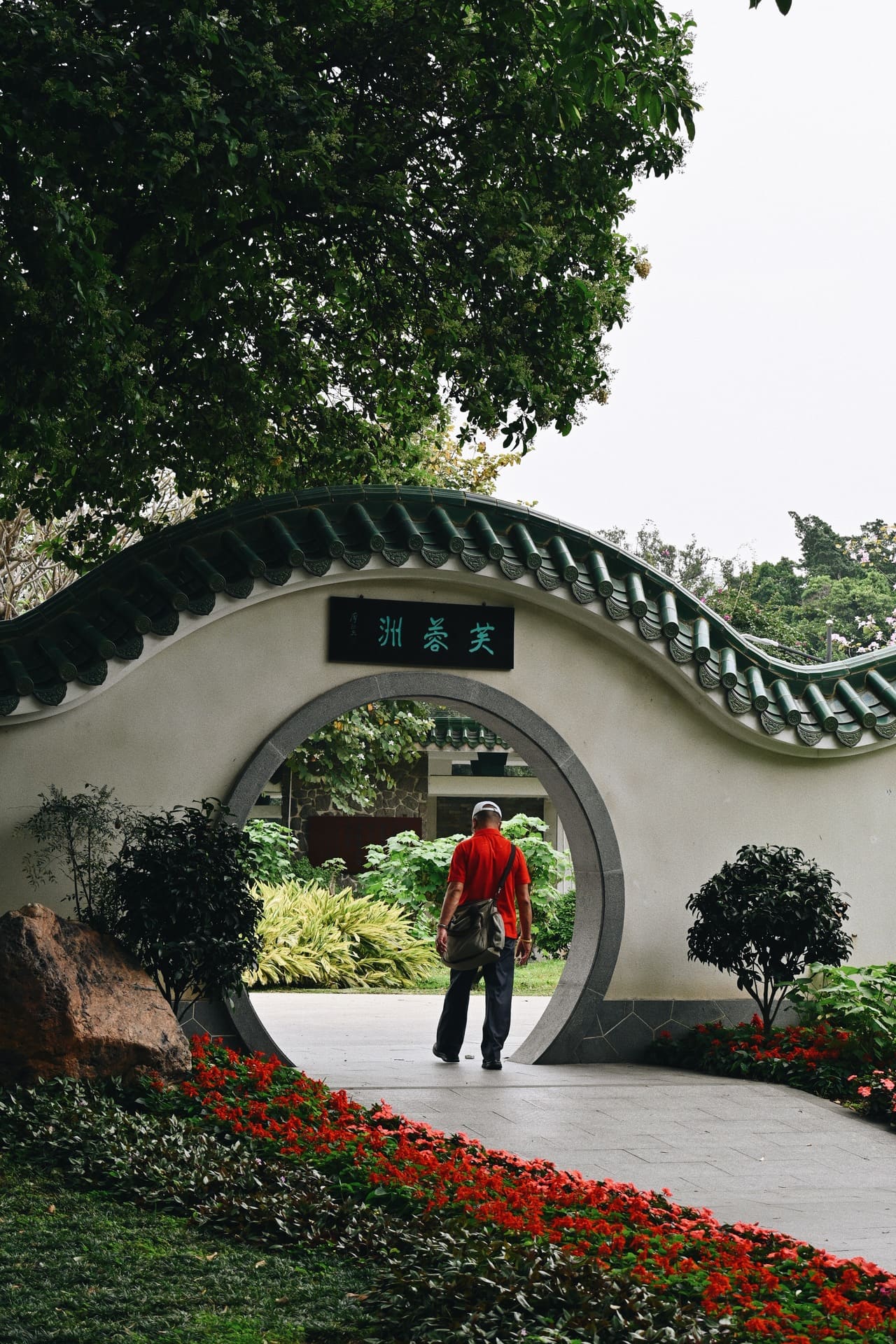
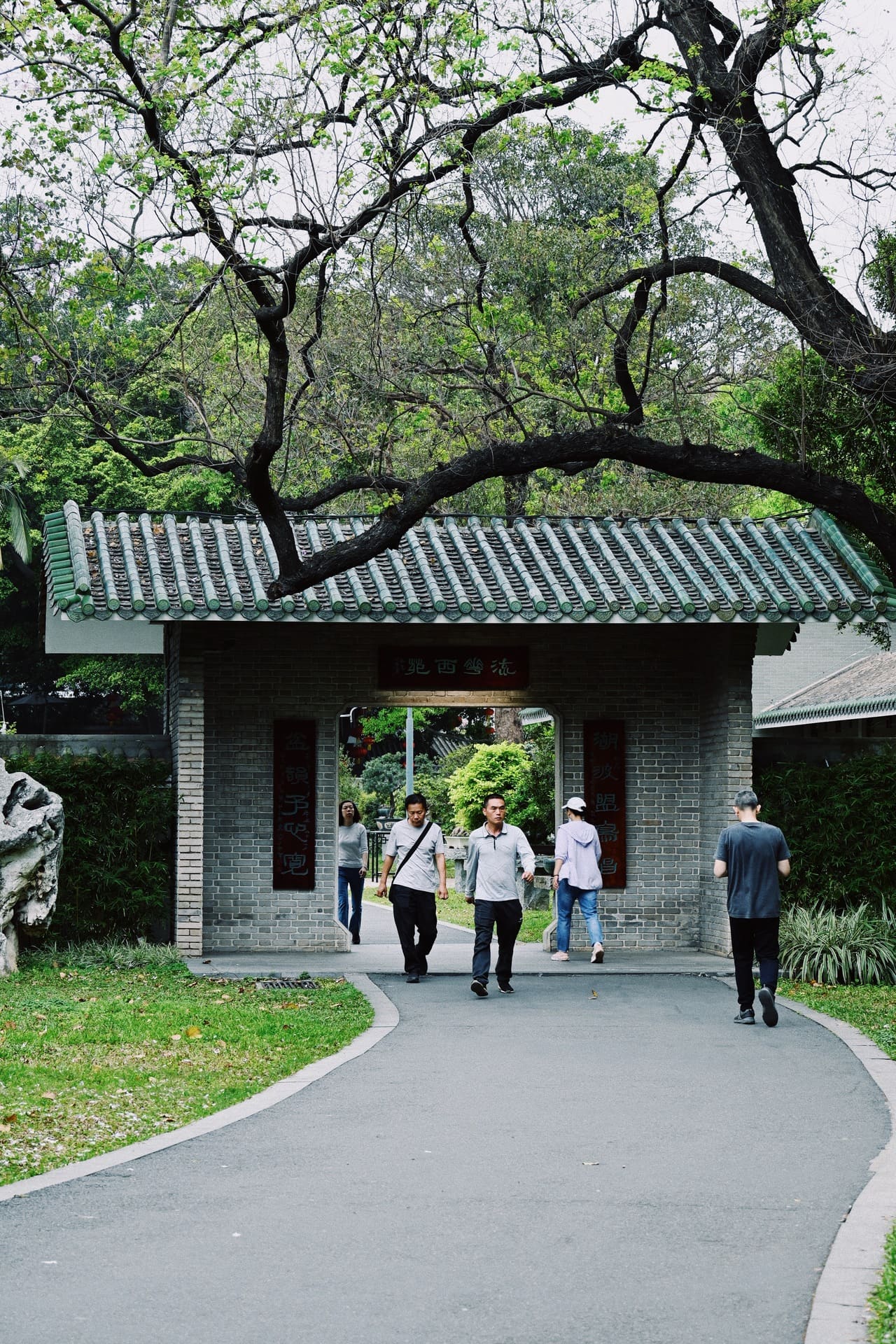
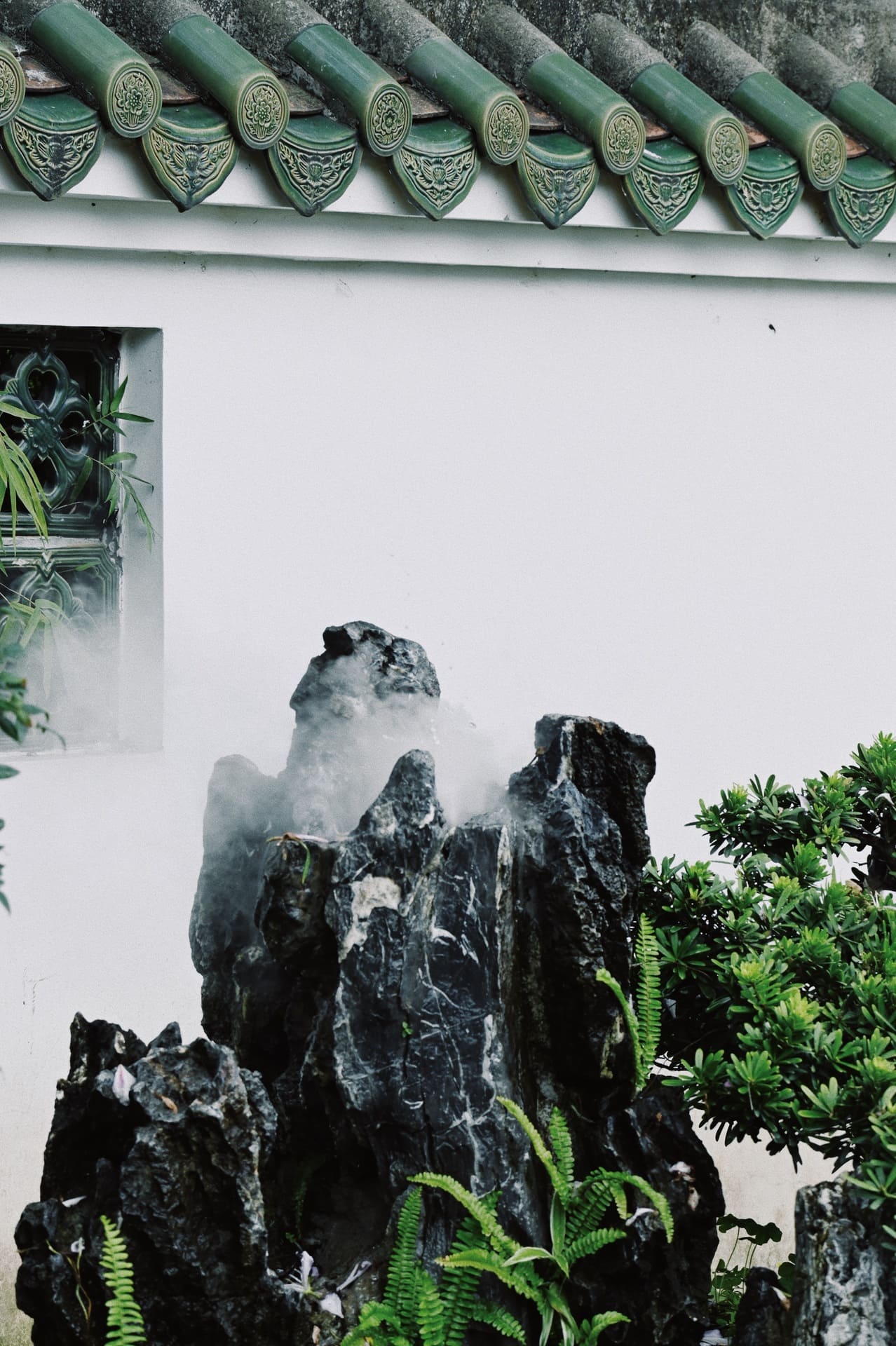



Peasant Movement Training Institute
The Peasant Movement Training Institute used to be a Confucian Temple. It is a historic site for the Communist Party. Here, Mao Zedong taught about revolution, peasant issues, and rural education. Now the Institute is also a museum of the event, though most of the explanation is in simplified Chinese. Today, this place is a popular spot for photos because of its traditional architecture and red walls. It is even called the 'little Forbidden City.' People visit for a good photo or two and a good place to get a glimpse of the ancient architecture.


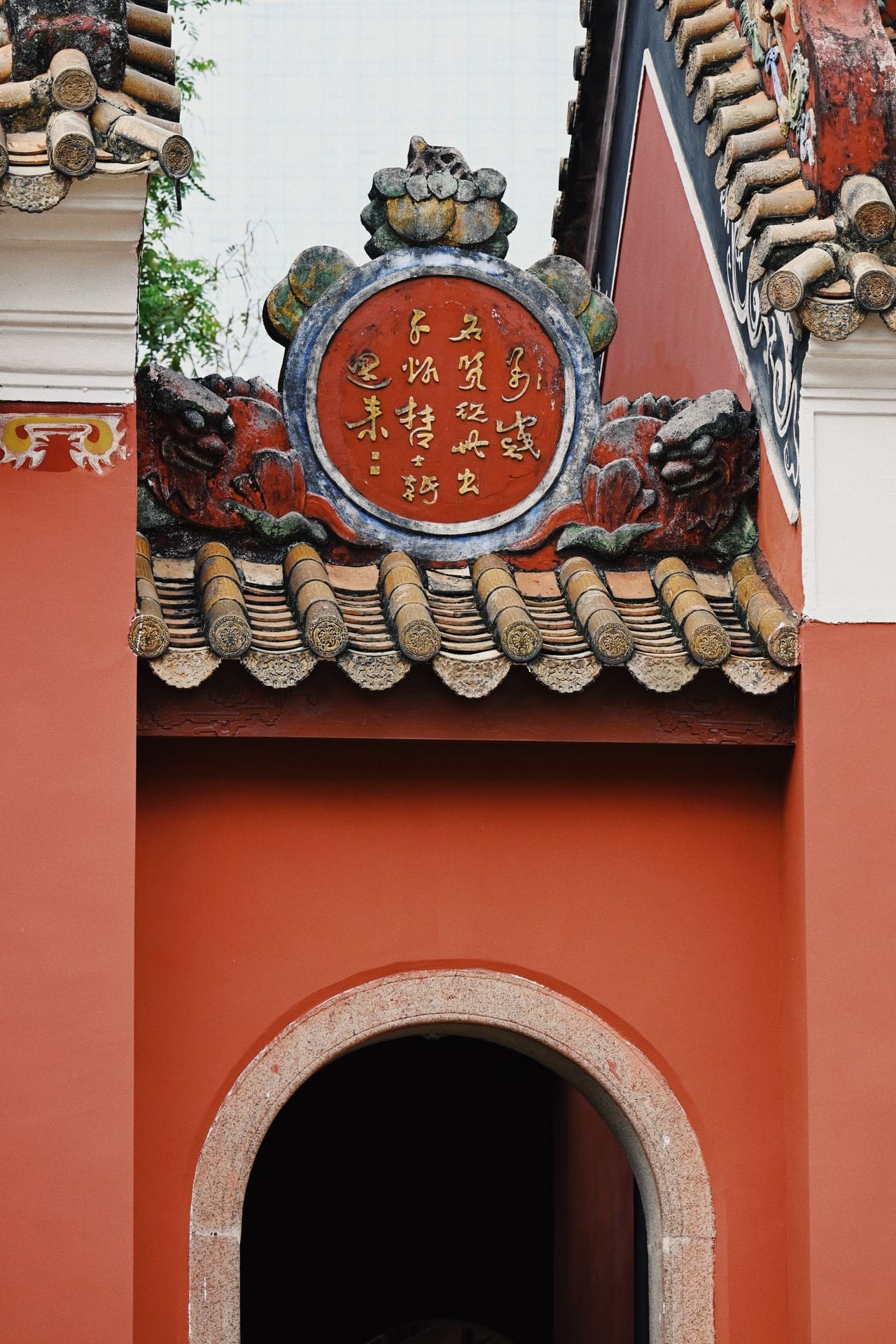


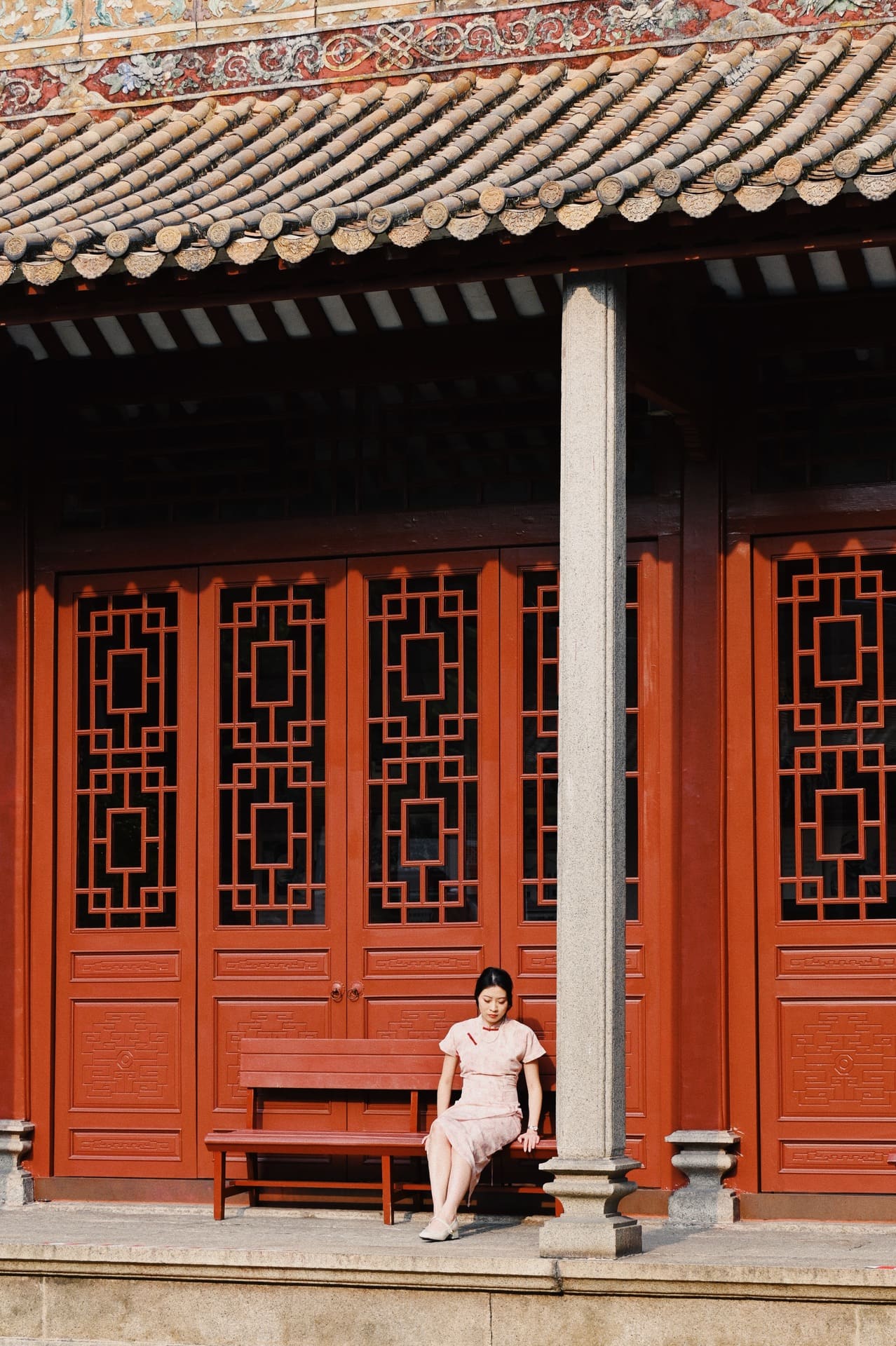
Zhujiang New Town
Guangzhou has more than just old buildings; it is also growing quickly. If you take the train to Zhujiang New Town, you will see the results of China's economic growth. This new business area is filled with tall, shiny skyscrapers by the river. When night comes and the lights turn on, the city looks bright and lively, surprising many who wouldn't expect this in mainland China.
Liede Bridge crosses the Pearl River, linking two parts of Guangzhou. You can also see Haixin Bridge, which has a sleek white curve over the river. Night cruises are available for visitors to enjoy the beautiful views. The highlight is Canton Tower, which stands 602 meters tall. This unique building catches people's eyes with its colorful lights that change.



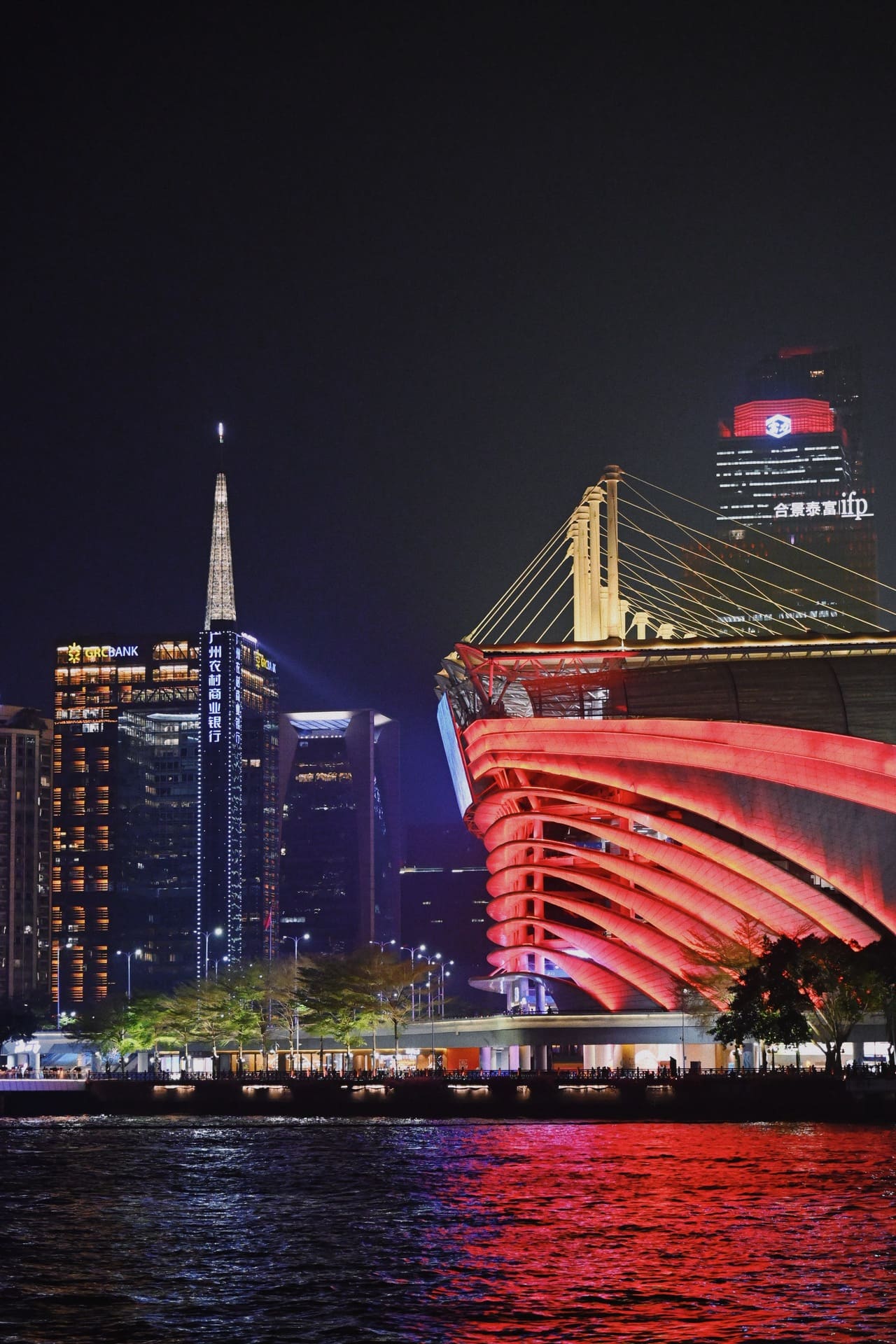


Savour Cantonese cuisine – the art of subtlety
A visit to any city in China isn’t complete without enjoying delicious food. The country offers a lot from nature and has a long history of diverse cooking styles. Among all the regional cuisines, Cantonese food from Guangzhou and the nearby Hong Kong stands out. It emphasizes fresh ingredients, balanced flavors, and umami tastes. There's even an old Chinese saying that goes, 'Be born in Suzhou, live in Hangzhou, eat in Guangzhou, die in Liuzhou,' highlighting the importance of good food in Guangzhou.
A quick overview
With seafood and livestock raised and fresh vegetables and grain cultivated in the region, Cantonese cuisine focuses on the freshness, umami, and original flavour of the various ingredients, emphasizing the delicate balance of flavours. Seasoning is kept light in the cuisine, with soy sauce, rice wine, ginger, spring onion, salt, and sugar being the main spices and condiments. A range of cooking methods are adopted, but steaming (cooking food with moist heat) and stir-frying (heating food by stirring ingredients quickly with a bit of oil in a wok) stand out. Steaming has been around since 5000 BCE. It needs fresh food and a precise balance of time and heat. This way, the food is cooked perfectly, with a rich umami flavor and a tender texture. Stir-fried food is known for the versatility in terms of food pairing and wok hei, the caramelized and charred fragrance, taste, and texture brought by the high flame. This requires high level of skill as the chef will need to make sure the food is constantly in touch with the heat source without burning them.
Food to try
Steamed seafood and meats
Guangzhou is a land of bounty, so fresh ingredients are readily available. Steamed seafood and meats should be on your list. The choices are endless, ranging from fish, crab, savoury egg custard, meat patty, to whole chicken. Think flaky, tender fish that is seasoned with the umami-rich soy sauce, shredded ginger and scallion, perfectly heated smooth and creamy egg that goes well with a bowl of steamed rice, and the whole bird with minimal seasoning to reflect the freshness of the meat.
Stir-fried dishes
Like steamed dishes, options of stir-fried dishes are again endless, as when it comes to pairing of ingredients, the world is the chef’s oyster. Balance is the name of the game though, a protein item or two get paired with vegetables, mushrooms, or sometimes nuts. Hearty grain / main dishes can be spotted, like fried rice and sliced beef with silky rice noodles. The flavours range from savoury to spicy or savoury-sweet, depending on the seasoning and the condiment. This is also your chance to experience the allure of wok hei, where the vibrant flavours are enhanced with a hint of smokiness.
The yum cha experience
No Cantonese cuisine experience is completed without yum cha, which you enjoy a variety of exquisite dim sum, rice or noodle dishes, along with Chinese tea. This is usually served during daytime, in the evening most restaurants serve steamed, stir-fried dishes and more. Dim sum is as diverse as it gets – to begin with, there are savoury buns like steamed BBQ pork bun and sweet ones like sweet salted egg yolk custard bun. And then there’s cheong fun (steamed rice rolls), that delicate silky rice roll sheet wraps seafood, meats, vegetables etc. Not to mention dumplings, which come in different sizes, shapes, and filling. The dough and wrappings can be made of flour, wheat starch, rice flour or even dried tofu sheets. Signature items include steamed shrimp dumplings, siu mai made with pork and shrimp, and different restaurants have their own ways to elevate a dish. Pair it with congee, stir-fried noodles or rice, and your heart and stomach will be full. Don’t forget the tea though, there are 6 types of Chinese tea, categorized according to how the tea leaves are processed. The leafy, pleasantly bitter caffeinated drink can keep you invigorated and cleanse your palate in between dishes.
Siu mei (Cantonese BBQ meats)
Another signature dish of the cuisine is siu mei, where different kinds of meats are roasted in a big oven. Common options include char siu (the seasoned pork is roasted into a charred, savoury-sweet goodness), crispy pork belly (expect tender meat with crackling on top), soy sauce chicken, roasted goose, and so on. Pair it with hot steamed white rice and some leafy choy sum stalks, and call it one of the best comfort food in Cantonese cuisine.
Claypot rice
Speaking of comfort food, you can’t miss the claypot rice, especially if you visit the city in winter. The rice is paired with different meats (fresh or preserved) and sometimes mushrooms, then everything is steamed in a claypot. It’s usually served with sweet soy sauce, and don’t forget the scorched rice crust at the bottom, it’s where you get the charred crispy grain delight.
Wonton noodles
Last but not least, there’s wonton noodles, where thin and pleasantly chewy egg noodles are served in a hot clear broth with subtle umami, and scrumptious dumplings made with flour wrappings and juicy prawns (sometimes with minced pork, depending on the restaurant’s preference). It is unassuming, but it takes years of practice, intuition, and fresh ingredients to cook the perfect bowl.
That’s it for the 3-day Guangzhou trip. It’s a city that I’d love to visit again, especially for the Lingnan gardens I didn’t get to explore and the new business districts. Hopefully I can also visit other Chinese cities soon. Hope you enjoy reading this, and see you next time!
(Originally named as 'Springtime getaway in China: 3 days in Guangzhou' and published in February 2025, this article has been updated for readability.)

